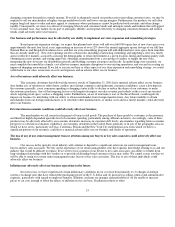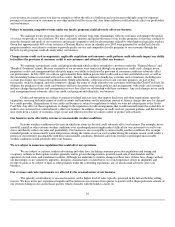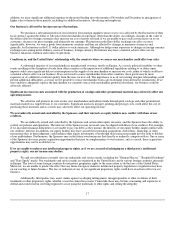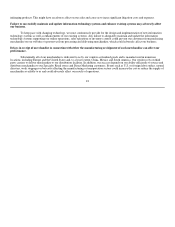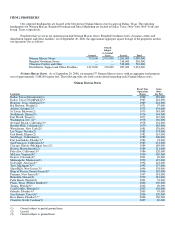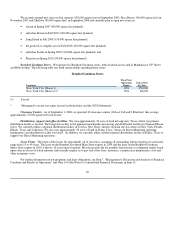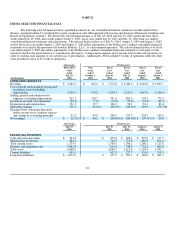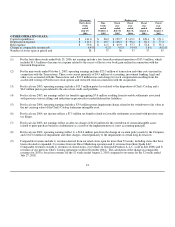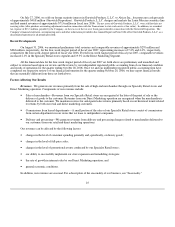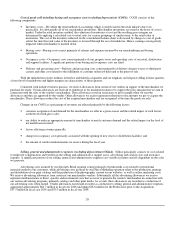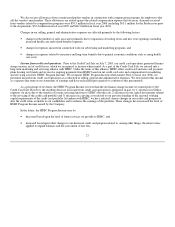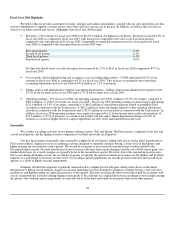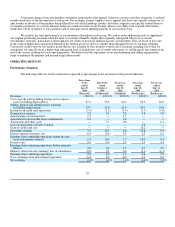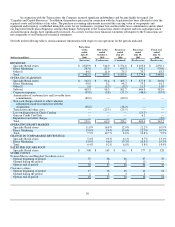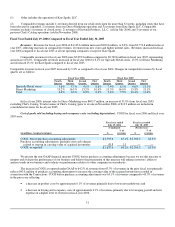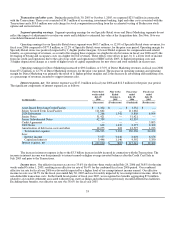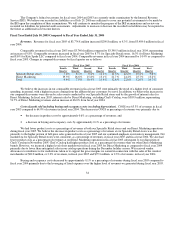Neiman Marcus 2005 Annual Report Download - page 28
Download and view the complete annual report
Please find page 28 of the 2005 Neiman Marcus annual report below. You can navigate through the pages in the report by either clicking on the pages listed below, or by using the keyword search tool below to find specific information within the annual report.
ITEM 7. MANAGEMENT'S DISCUSSION AND ANALYSIS OF FINANCIAL CONDITION AND RESULTS OF OPERATIONS
EXECUTIVE OVERVIEW
The following discussion and analysis of our financial condition and results of operations should be read together with our
audited consolidated financial statements and related notes. Unless otherwise specified, the meanings of all defined terms in
Management's Discussion and Analysis of Financial Condition and Results of Operations (MD&A) are consistent with the meanings of
such terms as defined in the Notes to Consolidated Financial Statements. This discussion contains forward-looking statements. Please see
"Forward-Looking Statements" for a discussion of the risks, uncertainties and assumptions relating to these statements.
Overview
Neiman Marcus, Inc., (the Company) together with our operating segments and subsidiaries, is a high-end specialty retailer. Our
operations include the Specialty Retail stores segment and the Direct Marketing segment. The Specialty Retail stores segment consists
primarily of Neiman Marcus and Bergdorf Goodman stores. The Direct Marketing segment conducts both online operations and print
catalog under the brand names of Neiman Marcus, Bergdorf Goodman, Horchow and Chef's Catalog (prior to its disposition in
November 2004). We also own a 56% interest in Kate Spade LLC, which designs and markets high-end designer handbags and
accessories.
Neiman Marcus, Inc. (formerly Newton Acquisition, Inc.) acquired The Neiman Marcus Group, Inc. (NMG) on October 6, 2005
through a merger transaction with Newton Acquisition Merger Sub, Inc., a wholly-owned subsidiary of Neiman Marcus, Inc. The
acquisition was accomplished through the merger of the Newton Acquisition Merger Sub, Inc. with and into NMG, with NMG being the
surviving entity (the Acquisition). Subsequent to the Acquisition, NMG is a subsidiary of the Company, which is controlled by Newton
Holding, LLC (Holding). Both the Company and Holding were formed by investment funds affiliated with Texas Pacific Group and
Warburg Pincus LLC (the Sponsors).
Prior to the Acquisition, the Company had no independent assets or operations. After the Acquisition, the Company represents
the Successor to NMG since the Company's sole asset is its investment in NMG and its operations consist solely of the operating
activities of NMG as well as costs incurred by the Company related to its investment in NMG. For periods prior to the Acquisition, NMG
is deemed to be the predecessor to the Company. As a result, for periods prior to the Transactions, the financial statements of the
Company consist of the financial statements of NMG for such periods. All references to "we" and "our" relate to the Company for
periods subsequent to the Transactions and to NMG for periods prior to the Transactions. The accompanying condensed consolidated
statements of earnings and cash flows present our results of operations and cash flows for the periods preceding the Acquisition
(Predecessor) and the periods succeeding the Acquisition (Successor), respectively.
We have prepared our discussion of the results of operations for the fiscal year ended July 29, 2006 by comparing the results of
operations of the Predecessor for the fiscal year ended July 30, 2005 to the combined amounts obtained by adding the earnings and cash
flows for the Predecessor nine-week period ended October 1, 2005 and the Successor forty-three week period ended July 29, 2006.
Although this combined presentation does not comply with generally accepted accounting principles (GAAP), we believe that it provides
a meaningful method of comparison. The combined operating results have not been prepared on a pro forma basis under applicable
regulations and may not reflect the actual results we would have achieved absent the Transactions and may not be predictive of future
results of operations.
In connection with the Transactions, we incurred significant indebtedness and became highly leveraged. See "Liquidity and
Capital Resources." In addition, the purchase price paid in connection with the Acquisition has been allocated to state the acquired assets
and liabilities at fair value. The purchase accounting adjustments increased the carrying value of our property and equipment and
inventory, established intangible assets for our tradenames, customer lists and favorable lease commitments and revalued our long-term
benefit plan obligations, among other things. Subsequent to the Transactions, interest expense and non-cash depreciation and amortization
charges have significantly increased. As a result, our successor financial statements subsequent to the Transactions are not comparable to
our predecessor financial statements.
Our fiscal year ends on the Saturday closest to July 31. All references to fiscal year 2006 relate to the combined 52 weeks ended
July 29, 2006 (calculated as described above); all references to fiscal year 2005 relate to the 52 weeks ended July 30, 2005 and all
references to fiscal year 2004 relate to the 52 weeks ended July 31, 2004.
24


